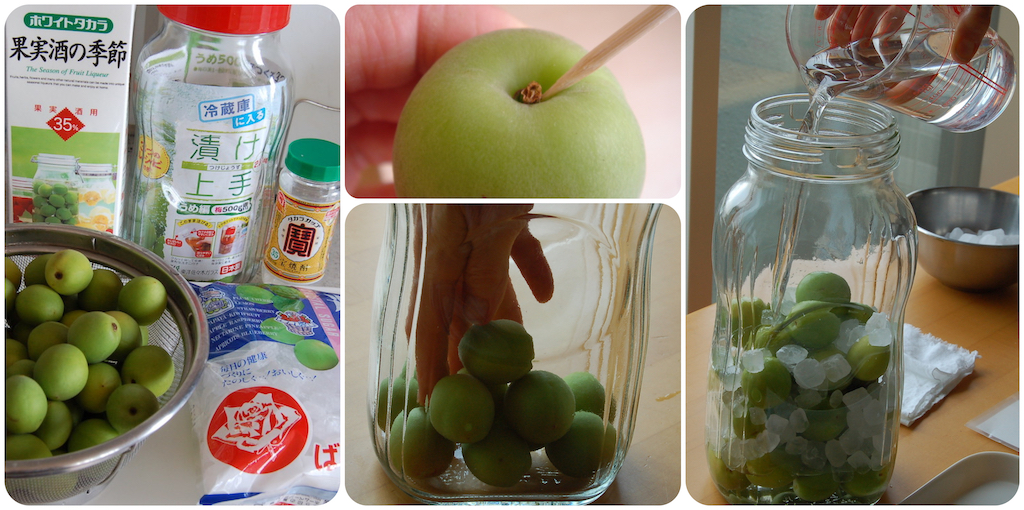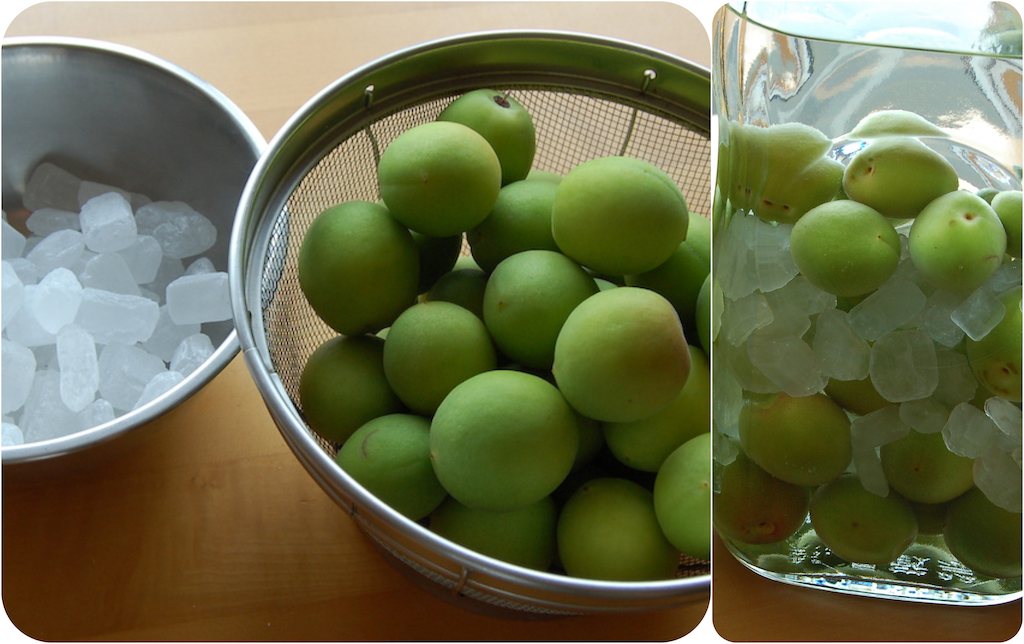
梅酒づくり Uméshu-Zukuri
In Japan, early June is the time for UMÉ SHIGOTO (plum work), transforming the harvest of not-yet-fully-ripe fruit into a sweet liqueur (uméshu) and/or sour, lip-puckering salt-cured uméboshi.
If you are able to source green, not-fully-ripe Japanese umé plums it is fairly simple to make a luscious liqueur from them. In addition to the fruit you’ll need rock sugar (what the Japanese call koori-zatō) and 35 proof shōchū and a glass (or other non-reactive) jar or tub that can be closed tightly. And, you will need PATIENCE.
Patience to carefully remove the stem bits without bruising or puncturing the fruit… patience to carefully wipe each plum with a clean cloth soaked in shōchū… patience to not stir the contents of the jar as you wait for the rock sugar to melt and the mixture to ferment. It will take about 3 or 4 months for the magic transformation from fruit to fruity-rich uméshu.

DOWNLOAD a guide to making UMÉSHU Plum Wine




